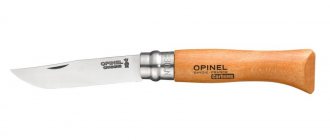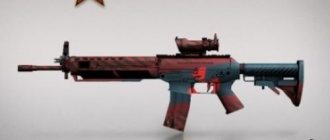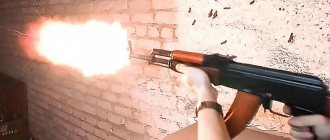Heather is a plant of the Ericaceae family. The name of the flower comes from the ancient Slavic word “vrasenets”, meaning frost. And indeed, its shoots, strewn with small flowers, resemble frost on the branches. In winter, this is one of the few plants that retains its bright colors and pleasing to the eye in the harsh northern latitudes. In this article we will talk about the beneficial and medicinal properties, as well as contraindications, of this wonderful plant.
Plant characteristics
Heather is a small, highly branched shrub. In the wild, it can be found in different parts of the world: Europe (except Italy); North America, washed by the waters of the Atlantic Ocean; North Africa; temperate climate zone of Asia. In Russia, heather heaths are found in the European part of the continent, Eastern and Western Siberia.
A beautiful combination of two varieties of heather
Most often, thickets of heather - “heathers” grow among pine trees on the edges of forests, swamps, peat bogs, sands, and places with poor, infertile soils.
Depending on the variety, the height of the shrub ranges from 25 cm to 1 m. Its branches are strewn with small triangular leaves, the length of which reaches 2.5 cm and the width - 1 cm. They do not have a petiole and are located close to each other.
The shrub blooms from August to September, and if kept in a room with a temperature no higher than 12 - until January. Its flowers are small, goblet-shaped and collected in racemes, densely located on the stem. The variety of colors of the flower makes it indispensable for decorating the garden in the autumn-winter period. Depending on the variety, the flowers of the bush can be white, lilac-pink, crimson, or purple.
Growing heather from seeds
Heather is unpretentious, so it can also be grown from seeds. First you need to get seedlings. To do this, the container must be filled with a soil mixture, for the preparation of which coniferous soil, sand and peat are mixed in a ratio of 1: 1: 2. The soil is well moistened. After this, grains are planted into the substrate. They should be deepened by 1 cm.
The container is left in a warm place where the temperature does not fall below +20°C. It is necessary to moisten the soil regularly. The first shoots appear within 4 weeks. When the seedlings reach 5-8 cm in height, you can transplant them into individual large pots. In winter, seedlings can be kept in a cool room at a temperature of +10°C...+12°C. When the plants reach two years of age, they can be planted in open ground.
if desired, raw materials for treatment are prepared independently or purchased ready-made
Varieties of heather in nature
Heather is represented in nature by only one species, “Common heather ,” and its diversity is due to the large number of varieties. There are about 300 of them. Some of them:
- Carmen (Carmen) - most common in European countries. The shrub reaches a height of 30-40 cm, its flowering period is August-October. A shrub with pink-violet flowers that combines well with other species; loves sunny areas sheltered from bad weather.
- H. Hamilton (Hamilton) - was bred in England in 1935. The shrub has a spherical shape, grows from 30 to 40 cm in height. Its distinctive feature is a large number of brushes of lush flowers with a double structure. Hamilton loves well-lit areas and requires moderate watering, as it can die from stagnation of water.
- Erica gracilis (graceful) - its homeland is South Africa. The shrub reaches a height of 0.5 m and has small needle-like leaves. The flowers are long, goblet-shaped, their abundant quantity hides the stems, forming a blooming ball. The most common is the graceful pink-violet color; its new varieties with white and red flowers are less popular. The plant tolerates only light frosts, so it is often grown in the winter garden, where its flowering can last from September to February.
- White Lawn (from English “White Lawn”) is a shrub that spreads along the ground in a green carpet with small flowers resembling bells in shape and color. Feature - height up to 10-15 cm. Flowering time of the bush - August-September.
- Boskoop was developed in Holland. Its height is 30-40 cm. It blooms from late August to late September with small lilac-pink flowers. A distinctive feature is the yellow-green color of the leaves, which in the autumn-winter period changes to copper, red-orange.
Boskoop
White Lawn
JH Hamilton
Erica gracilis
Carmen
In addition to its aesthetically attractive appearance, the plant is famous for its healing properties.
What to choose?
It would seem that this question has a clear answer; if there is space, then it is better to have both heather crops in the garden. Due to similar requirements for growing conditions, they can be planted in small clumps in the neighborhood, which, due to different flowering periods, successfully complement each other.
But if you have to make a choice between two crops, then according to gardeners, heather is a more unpretentious crop that takes root well in the garden. But growing Erica often turns out to be a failure, although it would seem that all the necessary agricultural practices were followed.
Most likely, this is due to the fact that in supermarkets one of the types of Erica is most often found, which does not winter well in the conditions of the middle zone, but among the heathers there are also often low-winter-hardy varieties.
Common heather 'Dark Beauty' (Calluna vulgaris 'Dark Beauty').
Useful properties of the plant
In the pharmaceutical industry they are used during their flowering period. The above-ground part of the bush contains catechin tannins - 7%, arbutin glycoside and ericolin - 0.3-0.86%, quercetin, arbutrase enzyme, citric and fumaric acid, starch, resins, gum, flavonoids, carotene, potassium, phosphorus, sodium compounds , organic acids, coumarins, steroids.
Heather contains a yellow pigment and can be used to produce natural dyes.
Due to its chemical composition, heather has medicinal properties and can be used as a medicine in the following cases:
Beautiful white heather blooming
- For skin diseases accompanied by the development of an inflammatory process and a violation of the integrity of the skin. Acting as an antiseptic, it helps in the treatment of wounds, the consequences of burns, and ulcers.
- For the treatment of colds and oral diseases. Having anti-inflammatory properties, heather is indicated for stomatitis, pharyngitis, and tonsillitis. Possessing expectorant properties, the plant promotes the removal of sputum and can be used for bronchitis and pulmonary tuberculosis.
- The diaphoretic properties allow it to be used for diseases accompanied by an increase in body temperature.
- For the treatment of diseases of the urinary system, such as cystitis, sand in the kidneys, since the plant has diuretic properties.
- Heather can be used as a sedative for nervous system disorders.
- For stomach diseases associated with increased stomach acidity.
- For the treatment of cholecystitis.
An infusion of flowers and leaves of the plant is used to enhance hair growth.
The body benefits from consuming heather honey, which is distinguished by its protein content (up to 2%) and flower pollen (up to 10%).
Features of a specially designed pistol
Experiments on new weapons began in 1993. Since that time, the development of new development work under a special code also began. The SR-2 "Veresk" submachine gun is adapted for the 9x21 cartridge. SR stands for "special development". The final version of "Veresk" was put into service in 2000.
The main features of PP SR-2 are:
- Rare automatic system and barrel bore locking unit.
- Discharge of powder gases into the gas chamber, which is located above the barrel.
- The bolt frame is rigidly connected to the gas piston rod.
- The return spring is located in the bolt carrier channel.
- The bolt is equipped with six lugs.
The reloading handle is located on the right side. Thanks to this, the size of the weapon is significantly reduced. The compensator is attached to the muzzle. The automatic transmission is made by cold stamping from a sheet of steel.
Harm and contraindications for use
Field of blooming heather
Treatment with heather is contraindicated in case of individual intolerance to the components of the plant.
It is advisable to avoid using it if you have low stomach acidity, constipation, or increased blood clotting. This may harm the body.
When using heather-based products, you must remember that it can cause inhibition of reactions and drowsiness.
Advantages and disadvantages[edit | edit code]
SR-2MP at the exhibition “Technologies in Mechanical Engineering” 2012.
Advantages[edit | edit code]
The main advantage of the SR-2 is its high firepower, high accuracy of fire and the lethal effect of the bullet at short distances, which makes this weapon very attractive for various categories of army specialists for self-defense. SR-2 meets the requirements in the West for weapons of the PDW class[2].
Disadvantages[edit | edit code]
In the SR-2 version (not currently available):
The low quality of production samples, the “crude” design, non-interchangeable magazines and constant minor malfunctions of the weapon caused numerous complaints from users, who noted the high power of fire from PP and its potential prospects when brought to the proper level of reliability[2].
Use in folk medicine: recipes
In folk medicine, heather is used to prepare tinctures, infusions, and decoctions.
The powder of the plant's flowers helps with skin diseases.
To treat diseases of the throat and oral cavity, diseases of the nervous system, use a decoction:
Decoction recipe: place 20 g of heather in a 200 ml container and pour boiling water. Place the mixture in a water bath for 15 minutes, then leave for ¾ hours and strain.
Heather garden in landscape design
Heather tea (1 tsp/200 ml of water) with the addition of honey helps eliminate insomnia and nervous tension.
For pulmonary tuberculosis, heather tincture is used.
Tincture recipe: pour 10 g of plant roots with 50 ml of 70% alcohol, leave for 2 weeks. After straining, take 40 drops (less than a teaspoon) before eating.
Baths from the infusion of the flower have a calming effect and help with rheumatism and bruises. To take them, prepare an infusion by steaming 50 g of herb in 7 liters of hot water for half an hour.
Growing in the garden and at home
Heathers and ericas are often grown at home; pots are placed on shelves and window sills. Can be grown in the garden on the balcony and terrace. Growing in pots can be a little easier as it is harder to get the proper acidic substrate in the garden.
Heathers and ericas love solitude and are planted at a distance of 20 cm between bushes. Both species feel better in a bright place, although direct sunlight is not suitable. It is in this place that plants grown on the balcony or in the house should be. Caring for heather and Erica on the balcony is limited to watering, not too often - they do not like wet substrate. Plants in pots are watered deeply once a week or 10 days. Heather in the garden is watered much less often, only if the summer is very dry, hot. During the first watering, it is worth adding fertilizer for heather plants in the form of a gel. When grown in the garden, fertilizing is applied once a year, in the spring, using fertilizers for acidophilic plants .
Caring for heather and erica is extremely simple. Even novice gardeners can handle these unusual plants; small, colorful flowers will be an excellent decoration for any room.
"Veresk" and its German analogue
"VPK" has already talked about modern small-sized submachine guns. Let's take a look at one more feature of this type of weapon, which has taken a fairly strong position in the modern system of small arms of law enforcement agencies and special forces.
Basis of searches
The use of a relatively low-power pistol cartridge, on the one hand, limits the range of an aimed shot to 150–200 meters, on the other hand, it makes it possible to obtain a light, compact sample with a small mass of ammunition. It would seem to be an excellent option for a small-sized, always ready-to-use automatic “weapon of close defense and attack”, convenient for shooting with the butt, offhand, from the hands, providing a high density of fire in a minimum time. In addition, a pistol cartridge with a relatively low level of gas pressure in the barrel and an initial bullet speed below or slightly higher than the speed of sound facilitates the use of silencers.
Meanwhile, traditional pistol cartridges, including the 9x19 type, which are in service in many countries around the world, no longer fully satisfy modern requirements for a combination of penetrating and stopping action. The widespread use of personal armor protection (PIBZ) has forced us to qualitatively increase the penetration ability of bullets without reducing their stopping quality. Of course, the potential capabilities of widely used types of pistol cartridges are far from being exhausted - this is at least evidenced by the developments of Russian designers of small arms ammunition. But over the past two decades, a number of new types of small-sized automatic weapons have appeared. They are more compact compared to assault rifles, machine guns, carbines and more powerful than “traditional” pistols and submachine guns. Moreover, only a few have been brought into service and into mass production.
It is clear that the search is based on the choice of cartridge. And here you can see two directions: more powerful pistol cartridges of “traditional” calibers and small-caliber ones, which occupy an intermediate position between pistol and machine gun ammunition.
Klimovsk product
In 1996, the powerful 9-mm CP1 pistol with the SP10 cartridge was adopted by the Federal Security Service of the Russian Federation. Both are developments of an experimental complex that included a 9-mm RG052 cartridge of the 9x21 type and a RG055 pistol of the P. I. Serdyukov system. Ammunition of increased power and weapons for it were created by employees of the Central Research Institute of Precision Engineering (TSNIITOCHMASH) in the city of Klimovsk near Moscow as part of development work on a new combat pistol on the theme “Rook” (later, on the basis of the same system, a 9-mm SPS pistol was created, adopted at weapons of the Russian army).
Trial use of pistols began in 1993 in special forces units of law enforcement agencies. At the same time, the Ministry of Security of the Russian Federation (later the FSB) issued an order for the development of a new pistol (code “Vector”) and a small-sized submachine gun. It is worth noting that the possibility of creating a submachine gun was assumed already at the beginning of the design of a new pistol complex with the 9x21 cartridge. Now this idea has taken shape in the form of experimental design work under the code “Veresk”. The improved cartridge was designated SP10, the pistol ordered by Lubyanka was designated SR1, and the submachine gun was designated SR2 (the abbreviation “SR” means “special development”, “SP” means “special cartridge”).
Testing of the CP2 "Veresk" submachine gun at TsNIITOCHMASH was completed by mid-1998, and in 2000 it was put into service.
The sample is arranged according to the scheme with the combination of the magazine socket and the pistol grip control. The main features of the submachine gun: an automatic system, rare for this class of weapon, and a unit for locking the barrel bore by turning the bolt. Powder gases are removed through a transverse hole in the barrel wall into a gas chamber located above the barrel. In automation, the leading link is the bolt frame, rigidly connected to the gas piston rod. The bolt has six lugs. The return spring is located in the bolt frame channel. The design of the moving parts of the automation and the impact mechanism is similar to what TsNIITOCHMASH previously used in the development of the AS and SR3 automatic machines.
On the right side there is a folding reloading handle - this made it possible to reduce the transverse dimensions of the weapon. A compensator is attached to the muzzle of the barrel. The automatic transmission and its hinged lid are made of cold stamped steel sheet.
The impact mechanism is striker type. The non-automatic safety flag is located on the right side; when turned on, the safety lock blocks the trigger, and its flag blocks the groove for the reloading handle to pass through. A separate flag translator is located on the left side and sets single and automatic fire; the translator flag is accessible to the thumb of the hand holding the weapon.
The cartridges are fed from a direct box-shaped detachable magazine with a staggered arrangement of cartridges. When the ammunition is used up, the magazine feeder rests against the bolt, which facilitates the ejection of the magazine after pressing its latch. It is double-sided, which allows for quick magazine replacement when shooting with the right or left hand.
Tactical and technical characteristics of the SR2M submachine gun
- 9x21 Cartridge
- 1.65 Weapon weight (kg) without ammunition and collimator sight
- 0.3 Weight (kg) of the KP-SR2 collimator sight
- 603 Length of weapon with folded butt (mm)
- 350 Weapon length with stock folded (mm)
- 174 Barrel length (mm)
- 6 Number of grooves
- 440 Initial bullet speed (m/s) when firing SP10 cartridge
- 415 Initial bullet speed (m/s) when firing SP11 cartridge
- 430 Initial bullet speed (m/s) when firing the 7BTZ cartridge
- 900 Rate of fire (rounds/min)
- 200 Aimed firing range (m)
- 20 or 30 rounds Magazine capacity
The bullet of the SP10 cartridge with a heat-strengthened core protruding from the shell reliably hits targets in SIBZ of the second and third classes of protection or in unarmored vehicles. In addition to SP10, SP11 cartridges with a low-ricochet bullet and 7BT3 with an armor-piercing tracer bullet can be used.
The front sight with a safety device is installed at the muzzle of the barrel. The rear sight of the mechanical sight is designed for firing ranges of 100 and 200 meters. Using a bracket, the KP-SR2 collimator sight with a field of view of 6o can be mounted on the cover of the automation box. It should be noted that collimator rifle sights, which allow you to quickly align the aiming mark with the target and aim the weapon, leaving both eyes open, are considered by a number of experts as the main ones when conducting short-range combat.
The butt of the weapon is stamped metal, folding up and forward, with a folding shoulder rest. The pistol grip and forend are made of impact-resistant plastic, the pistol grip is integral with the trigger guard, the forend covers the barrel, and a front stop is installed in front of it. The front curve of the trigger guard is designed for firing from outstretched arms, similar to shooting from a pistol with a two-handed grip.
The submachine gun has been modernized. Instead of a rigid stop, the CP2M now has a folding front handle on the fore-end, which increases the weapon's controllability and accuracy of fire. In the folded position, the handle becomes part of the forend. The fuse box has been slightly changed. In addition, the weapon received a different muzzle device - now it is not a muzzle brake-compensator, but a muzzle stop that protects the shooter’s hand from moving forward and burns from powder gases.
"Veresk" is worn openly on a belt or hidden, on the body using a suspension that accommodates the weapon itself and a spare magazine.
German version
Among the most popular topics in the development of “military” and “police” small arms abroad in the 1990–2000s can be called “personal defense weapons.” The term is quite arbitrary and widely interpreted, but, as a rule, it is understood as a small-sized model, designed for firing with single shots and bursts at short ranges, not too burdensome for the owner when carrying and reliably hitting the enemy with the first shot or burst - even if there is SIBZ or he is behind cover.
German designers approached this type of weapon several times and with varying degrees of success. In 2000, the company introduced a model that received the designation “MP7 submachine gun” and has since proven itself well.
Tactical and technical characteristics of the MP7 PDW submachine gun
- 4.6×30 Cartridge
- 1.2 Weight of weapon with unloaded 20-place magazine (kg)
- 340 Weapon length with stock retracted (mm)
- 540 Weapon length with stock extended (mm)
- 180 Barrel length (mm)
- 725 Initial bullet speed (m/s)
- 200 Aimed firing range (m)
- 950 Rate of fire (rounds/min)
- 20 or 40 rounds Magazine capacity
To begin with, a new cartridge 4.6x30 was developed. The Germans were not the first in creating ammunition that would retain the advantages of a machine gun at short ranges with a mass and pressure in the barrel comparable to a powerful pistol cartridge. At the end of the 80s, the Belgian Fabrique National designed an original machine gun - or submachine gun, if you like - the P90 chambered for the SS190 cartridge (5.7x28). The P90 aroused widespread interest at the time, but, despite optimistic forecasts, it did not find widespread use. We purchased it in small quantities. However, the German company also took the path of creating a new entire weapons complex, including new ammunition.
The 4.6x30 RUAG-Amotech cartridge is equipped with a pointed bullet with a small flat area on the top. With an initial speed of 725 m/s and a mass of 1.6 grams, a bullet with a steel core and a copper jacket allegedly penetrates at a distance of up to 200 meters, that is, within the range of aimed shooting, an obstacle made of a 1.6 mm titanium plate and 20 layers of Kevlar behind her. This meets the CRISAT protection standard and class 1-2 according to the domestic standard. The flatness of the trajectory, due to the high speed of the bullet, helps to increase accuracy, although the effective shooting distance is unlikely to exceed 100 meters.
When developing the weapon itself, the Germans also resorted to automation with a gas engine and rigid locking of the barrel. In the design of the corresponding mechanisms, Heckler und Koch decided not to be too original, combining already found solutions. The MP7 PDW is arranged according to the scheme of combining the magazine socket with the pistol grip control - this did not increase its dimensions too much, since the length of the cartridge is 38 millimeters.
Powder gases are removed through a side hole in the barrel wall. Its channel is locked by turning the shutter. The cartridge case reflector is mounted in the bolt. The design of the automation parts and the MP7 locking unit uses the experience of developing the G36 assault rifle from the same company, but the parts of these two samples are not interchangeable. Automation works differently, in particular, the piston and pusher of the MP7 are combined, unlike the G36. There is a shock absorber to soften the impact of the moving system in the rear position.
The barrel is made by cold forging. In its muzzle there is a thread for attaching a flash suppressor and a hole for fixing the muffler. The receiver is assembled from plastic parts. To better protect the mechanisms from contamination and reduce the transverse dimensions, a T-shaped rear-mounted reloading handle is used; it remains motionless during shooting. A two-way flag switch-fuse sets the modes of single and automatic fire. The flag is accessible to the thumb of the shooting hand.
The weapon is equipped with a retractable butt and a folding front handle, which in the folded position acts as a forend. The trigger guard is designed for shooting with thick gloves.
The cartridges are fed from a detachable box-shaped double-row magazine for 20 rounds (a magazine for 40 rounds is also presented). The reversible lever of its latch is located behind the trigger guard.
MP7 A1 is available in two modifications: KSK is intended for special forces, IDZ – for army units. The main difference is in the sights. The “infantry” IDZ is equipped with a rear sight with an open slot, the special forces KSK is equipped with a reversible diopter sight. The low-profile mechanical sighting device is complemented by a stepped Picatinny-type rail for installing a collimator sight. The diopter on the MP7 A1 KSK allows the use of RSA Hesoldt, Ampoint, and Eotech collimator sights in combination with it, and targeted shooting can be carried out with night vision goggles. If necessary, a laser target designator is placed on the same bar.
The 4.6x30 cartridge is equipped not only with a bullet with a steel core. There are variants of the same ammunition with a tracer and with a weighted bullet, which have a subsonic initial velocity. A weighted bullet is used in combination with a Swiss muffler (weight 520 g), which is attached directly to the flash suppressor. If the fire is carried out with high-velocity bullets, the silencer serves as a low-noise firing device.
It is hardly worth attaching much importance to the external similarity of the design of the described samples - CP2M and MP7 A1 - similar tasks inevitably lead to similar solutions.
Other developers have also created their own versions of small-caliber cartridges for PDW “close-range self-defense weapons.” We can mention, for example, the 6.5x25 CBJ-MS cartridge from the Swedish company CBJ Tech AB or the 5.56x23 (.224 VOB) from the Czech Luvo. True, unlike the Belgian 5.7 mm and German 4.6 mm, these cartridges and samples of weapons for them remained experimental.
Semyon Fedoseev
History of the creation of PP SR-2 "Veresk"
In the 1980s, the PWD category of shotguns emerged. The abbreviation was translated into Russian as “individual defense weapon.” Weapons of this class were used to arm technical trains of missile and anti-aircraft installations, military drivers, etc. The main task of such a weapon is the self-defense of military personnel whose small arms are not their main weapon.
The Soviet Union was designing various models for soldier self-defense, but the PWD concept was not introduced. In those years, the Stechkin automatic pistol was used to arm the technical teams of rocket launchers. At the end of the 70s it was replaced by the AKS-74U, but it was not included in the PWD category due to its large size.
The era of PWD in Russia began in the mid-90s. Then they developed new 9x21 mm ammunition. They had high power and penetrating force. High performance was achieved thanks to an increase in initial flight speed and a unique ammunition design. The developers planned to replace the outdated 9x18 mm cartridges that powered the Makarov pistol with new charges. Engineers created SR-1 projects for new ammunition, the unofficial name of which is “Gyurza”.
The new weapon was successful and was in high demand. This allowed the engineers to continue working, resulting in a new variant - the SR-2 Veresk. The development of the new project ended in 1999, now it is used in the Ministry of Internal Affairs, FSO, FSB and some other law enforcement agencies.
Ammunition[edit | edit code]
Veresk is designed to use various 9×21 mm caliber cartridges:
- SP10
- with a steel core of increased armor penetration; - SP11
- with a bullet with a lead core; - SP12
- with an expansive bullet that provides increased stopping power; - SP13
- with a tracer bullet.
According to experts, the destructive effect of bullets from SP-10 and SP-11 cartridges is 2 times higher than that of 9x18 mm PM, and also 1.5 times higher than that of 9x19 mm.
Technical characteristics of PP SR-2 “Veresk”
The tactical and technical characteristics are as follows:
- 9-caliber ammunition is used for shooting; Length with the butt unfolded - 603 millimeters; Length with the butt folded - 367 millimeters; Weight of the unloaded pistol - 1.65 kilograms; Bullet speed after firing - 415-440 m/s; Magazine holds 20 or 30 charges; Firing rate - up to 900 rounds per minute; Maximum target hitting distance - 200 meters.
To create a new product, Central Research Institute specialists considered several automation schemes. The choice fell on a scheme that was rare for this class of weapon - part of the powder gases was vented through the barrel bore, turning the bolt contributed to locking the barrel bore. The project was poorly financed, so the first prototype was assembled at the end of 1998.
The developers included the following task in the weapon - neutralizing opponents wearing second-class body armor at a distance of up to 200 meters, as well as defeating equipment not covered with armor at a distance of up to 100 meters. Central Research Institute specialists have developed several types of 9x21 mm cartridges:
- SP10 - the bullet was equipped with a steel core; SP11 - the core was made of lead, which reduced the possibility of ricochet; SP12 - the device increased the stopping effect; SP13 - tracer bullet.
Practical tests have shown that 11 and 13 models of bullets have a destructive force 1.5-2 times greater than that of the cartridges used in the Makarov pistol. The use of SR-2 armor-piercing charges allows you to penetrate 4-mm steel sheets at a distance of up to 70 meters.
The automation operates using a gas exhaust system. The gas piston stroke is long. The piston is located above the barrel, it is firmly connected to the bolt frame. Inside the piston there is a cavity in which the front part of the return spring is located. The bolt has six lugs; they lock the barrel bore using cutouts in the receiver.
After the shot, the gas piston and bolt carrier move to the rearmost position, and the bolt rotates. As a result of this, the barrel channel is unlocked, and the spent cartridge case is ejected. The bolt, starting to move to its original position, sends new ammunition into the chamber, after which the barrel bore is locked. Rigid locking of the barrel channel was chosen due to the use of powerful cartridges. The cocking handle is firmly connected to the bolt frame on its right side.
Design of SR-2 Veresk
The Veresk PP device allows you to attach a collimator sight. It increases the user's tactical advantage over opponents using other weapons. The speed of aiming with it increases by 2-3 times, in contrast to the mechanical sighting mechanism.
The holding handle is located in front of the forend. The trigger mechanism is made of a trigger type. It allows the shooter to fire singly or in bursts. A safety lever was placed on the receiver. It has two modes (fire and fuse). On the left side there is a fire change lever. It has two modes: one point - single shots, three points - burst shots.
The stock is made of metal and can be folded. It is equipped with a spring-loaded butt plate, thanks to which the time it takes to transfer the gun to the firing position is reduced to a minimum. You can shoot point-blank at the shoulder. The magazines are box-shaped, there are two versions: 20 and 30 rounds. They are arranged in a checkerboard pattern. The magazine is placed in the pistol grip fire control.
The standard sight is based on a front sight and a rotating rear sight, consisting of two sections (at 100 and 200 meters). The front sight is placed on a high post, so it can be adjusted vertically and horizontally. The bracket for attaching the red dot sight is located on the top of the receiver.
The device includes a compensator, at the top of which there is an inclined cut. The compensator reduces recoil to such an extent that the SR-2 can be fired with a “pistol” hold, which maintains high accuracy and accuracy. At the top of the case, at the front and back, there are swivels on which the belt is attached.
When partially disassembled, SR-2 consists of the following parts:
- Return mechanism; Bolt frame; Mainspring with guide; Drummer; Bolt; Forend; Barrel with automatic transmission, trigger mechanism, butt and other surface parts; Shop.
Composition, disassembly and packaging[edit | edit code]
[2]
PP SR-2 consists of[edit | edit code]
- Automatic transmissions with barrel and butt.
- Shutter.
- Bolt frame.
- Store.
- Stop and guide with mainspring.
- Return mechanism.
- Tubes
- Drummer.
- Forend.
- Front stop.
- Muzzle.
- Trigger mechanism.
- Collimator sight.
Incomplete disassembly[edit | edit code]
- Separate the store.
- Check to see if there is a cartridge in the chamber.
- Move the butt to the firing position.
- Open the cover of the automation box.
- Separate the return mechanism.
- Separate the guide with the mainspring.
- Separate the striker.
- Separate the bolt carrier with the bolt and separate the bolt from the bolt frame.
- Separate the forend.
Equipment[edit | edit code]
- Suspension. Serves for concealed carrying of PP and consists of a pouch for a spare magazine, a shoulder strap and a holster.
- Belt. Designed for open carrying of PP, attached to a submachine gun using a loop and carabiner. Adjustable in length.
- Oil can.
- Ramrod. Designed for cleaning and lubricating the barrel bore and other channels and grooves of weapon parts. Has a thread for attaching a wiper and a brush.
- Affiliation. Serves for disassembling the PP, cleaning and lubricating it. It includes a wiper, a brush, a screwdriver, a punch, and a pencil case.
- Bag. Designed for carrying spare magazines, an oil can, a pencil case with accessories and a cleaning rod.
- Case. Designed for laying PP during transportation.








